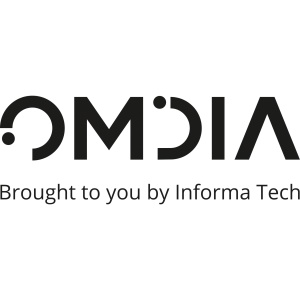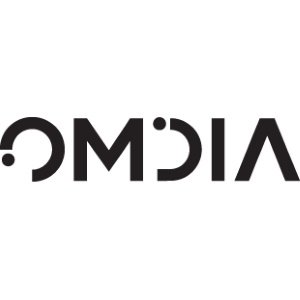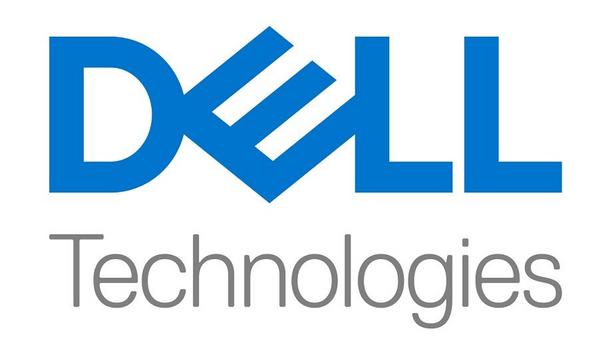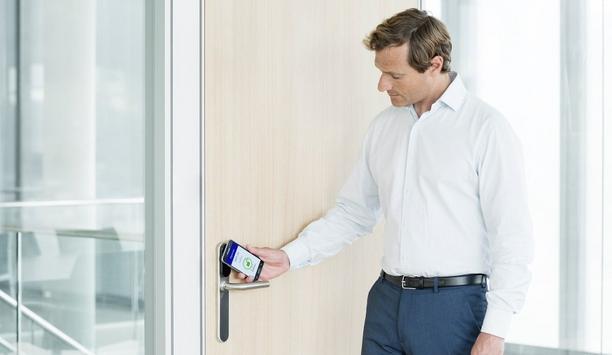Omdia - Experts & Thought Leaders
Latest Omdia news & announcements
Intersec Shanghai, the Chinese extension of the globally recognised security brand Intersec, will launch 13–15 May 2025 at the National Exhibition and Convention Centre (Shanghai). Gathering a variety of exhibitors, the fair will spotlight digital technologies and innovative solutions across key sectors, including security, fire safety, emergency response, and occupational protection. Digital advancements With a special focus on cutting-edge digital advancements, the show aims to empower public safety, emergency management, industrial safety, and disaster prevention. The global security landscape has become increasingly complex in recent years, driving governments worldwide to prioritise the safety and security sector. Smart security hardware and software market China has taken significant steps by implementing a series of policies to accelerate industry growth China has taken significant steps by implementing a series of policies to accelerate industry growth. By 2025, the smart security hardware and software market in China is projected to reach RMB 91.3 billion (USD 12.5 billion), while the market for occupational protection products is expected to reach RMB 145 billion (USD 19.9 billion). Furthermore, the smart fire safety market is anticipated to surge to RMB 422.2 billion (USD 57.8 billion) by 2026. A joint report by SIA, ASIS, and Omdia predicts a CAGR of 8.2% for the global physical security equipment market and 6.9% for security services from 2022 to 2026. Against this backdrop of robust domestic growth, Intersec Shanghai emerges as a pivotal platform for companies to showcase their innovations and expand their market reach. Global and domestic industry pioneers under one roof Intersec Shanghai combines Messe Frankfurt’s international expertise with Intersec’s extensive resources in the security sector. The show will be held concurrently with the Yangtze Delta International Emergency Disaster Reduction & Rescue Expo (EDRR), which focuses on government-led emergency systems and disaster resilience. Latest advancements in security The previous edition’s EDRR attracted more than 600 exhibitors and over 80,000 visitors, together drawing a higher number of buyers The previous edition’s EDRR attracted more than 600 exhibitors and over 80,000 visitors, together drawing a higher number of buyers and offering a valuable opportunity for cross-sector sourcing in security, safety, and disaster risk reduction. This year, both fairs have attracted pioneering brands such as 3M, HAINAR GROUP, CETC, CPIC, StarWin, Fire Chem, BFDX, GRANDING, LINGYIN, HANGZHOU AITE, DXGuard, Inrico, Lenovo, BAOLIFENG, OUBAO, PICC, Raythink, Beckwell, SHANGHAI HANYU, Shanghai Hygloves, Shanghai Petrochemical, Shanghai Xihongqiao Navigation Industry Development, Kingber Safety, CommPro, Tianlong Century, CRUN LTD, Sinomartin, Sunstorm, Jiaogao Fire Protection, TAIYU, Zhoan, TLX, top safe, Tyco, VdS, WALLEAN, huangdongmei trading, LONGJUN FIRE EQUIPMENT, YUNHE Technology, FERRASUN, Wanlian, Zhejiang Xun'an Flood Control, e-sunhigh and more. These exhibitors will present their latest advancements in security, fire safety, and emergency response, fostering cross-industry collaboration and growth. Adaptable training systems and real-world scenario simulation Among them, YUNHE Technology will showcase its VR Firefighting Training Solution and Military Deployment Command Training System, emphasising adaptable training systems and real-world scenario simulation. These solutions are designed for emergency management, public safety education, professional training for firefighting and security units, and industrial safety training. YUNHE Technology highlights the industry’s shift from ‘passive protection’ to ‘operational empowerment’, where security converges with human behaviour data, smart feedback, and education. Range of high-efficiency solutions The platform aims to facilitate digital transformation for enterprises, allowing them to operations TLX is a fire safety pioneer in integrated solution design and manufacturing. At the fair, the company will showcase its Supervised Latching Solenoid Actuators, along with a range of high-efficiency solutions tailored for complex fire suppression needs. Meanwhile, Tyco, a security pioneer, will introduce its one-stop security management platform, enabling seamless compatibility with third-party systems for fire control, building automation, human resources, and more. The platform aims to facilitate digital transformation for enterprises, allowing them to streamline their operations. Digital frameworks connecting security innovations Beyond the showcase, the Intersec Shanghai Digitalisation Application of Security Industry Value Chain Summit will bring together government officials and industry pioneers to explore digital solutions in security, emergency response, fire safety, and occupational protection. The summit will provide a comprehensive business platform for all industry stakeholders. Key highlights include: Trend analysis: experts will analyse policy trends and technological advancements, featuring case studies on digital applications in energy mining, smart buildings, and environmental safety monitoring. Report launch: the 2025 Digital Transformation Survey for the Safety & Security Industry will be released, providing essential standards and practical guidelines for the sector. Real world applications: focused on ‘full-scenario integration’, sessions will delve into digital applications for safety supervision, operational maintenance, and early-warning systems across critical sectors. Awards ceremony: the a&s Top Digital Products & Solutions Awards will recognise outstanding innovations, serving as a trusted reference for integrators and end-users in their procurement decisions. Intersec Shanghai is organised by Messe Frankfurt (HK) Ltd and CCPIT Shanghai.
Dell Technologies introduces advancements across its industry-pioneering server, storage and data protection portfolios designed to help organisations achieve data centre modernisation. Why it matters Organisations are rethinking their IT strategies to respond to the rise of AI, the need to support both traditional and modern workloads and increased cyber threats. IT teams are moving toward disaggregated infrastructure that abstracts compute, storage and networking into shared resource pools to deliver improved scalability, efficiency and adaptability. Dell Technologies server, storage and data protection innovations are designed to help customers rethink their IT infrastructure approach to better meet the needs of traditional and modern workloads. Dell PowerEdge: performance, energy efficiency and scalability Dell PowerEdge R470, R570, R670 and R770 servers with Intel Xeon 6 Processors with P-cores are single and double-socket servers in 1U and 2U form factors that easily handle demanding traditional and emerging workloads like HPC, virtualisation, analytics and AI inferencing: Improves Workload Consolidation: Consolidate legacy platforms, freeing up power and up to 80% of space per 42U rack with the Dell PowerEdge R770. These systems save up to half of the energy costs and greenhouse gas emissions, and support up to 50% more cores per processors and 67% increased performance. This reduces data centre footprints to help achieve sustainability goals and lower overall total cost of ownership without sacrificing performance. Delivers Extreme Power with Efficiency: The powerful and efficient Dell PowerEdge R570 achieves record-breaking Intel performance per watt, helping enterprises save on energy costs while maintaining high performance workloads. Future-Ready Designs: Simplify and future-proof operations with the Data Centre – Modular Hardware System (DC-MHS) architecture, as part of the Open Compute Project (OCP). DC-MHS standardises server design, supporting easier integration into existing infrastructure, improving customer choice. Streamlined management: PowerEdge servers deliver streamlined management and robust protection through Dell OpenManage enhancements and Integrated Dell Remote Access Controller (IDRAC 10) updates, including real-time monitoring. When paired with PERC13 PCIe Gen 5 HW Raid controller, customers can see up to a 33X reduction in write latency. Dell PowerStore boosts security: data management Dell PowerStore’s intelligent software design delivers an automated, highly programmable platform with advanced data reduction and independently scalable storage services suited to the needs of modern disaggregated architectures. PowerStore’s latest software release delivers: AI-Powered Analytics: Reduce cost and eliminate manual effort with Smart Support alerts and remediation, performance headroom analytics and carbon footprint forecasting using Dell AIOps (formerly CloudIQ) software. Enhanced Zero-Trust Security: Control access and boost availability with DoD smart card authentication support, automated certificate renewal and enhanced Storage Direct Protection integrations that deliver up to 4X faster backup restores plus support for the latest Dell PowerProtect systems. Advanced File System Support: Enhance system performance with advanced file management capabilities, robust data protection with secure file snapshots, capacity insights for smarter storage planning and streamlined migration from Dell Unity systems. Next generation of Dell ObjectScale Dell introduces the next generation of Dell ObjectScale, the industry’s highest-performing object platform. Dell ObjectScale delivers massive scalability, performance and efficiency for AI workloads. Dell is modernising the enterprise-grade architecture of ObjectScale and introducing new all-flash and HDD appliance options to provide: Fast Object for AI: Innovate faster with the industry-pioneering AI workload performance of ObjectScale XF960, delivering up to 2X greater throughput per node than the closest competitor and up to 8X greater density than previous-generation all-flash systems. Accelerate Modern Workloads: HDD-based Dell ObjectScale X560 accelerates key workloads like media ingest, backups and AI model training with read 83% faster throughput. Extreme Efficiency and Resiliency: Easily operate and secure AI data lakes with multi-site federation, copy-to-cloud, geo-replication, global namespace and data governance capabilities, backed by a new hybrid cloud solution powered by ObjectScale, developed in collaboration with Wasabi. Dell PowerScale innovations unlock the power of AI data Dell PowerScale’s scale-out architecture makes it ideal to use as the backbone for modern AI-driven operations. Advancements improve performance-per-terabyte, enhance data centre floorspace utilisation and balance affordability with performance to optimise TCO. High Density All-Flash Storage: 122TB SSDs maximise GPU utilisation with up to 6 PBs of high-speed data access in a single 2U node configuration and deliver pioneering performance density to meet massive AI throughput requirements. Hybrid and Archive Nodes: PowerScale A & H series nodes (H710, H7100, A310, A3100) deliver reduced latency and improved performance with a refreshed compute module for HDD-based platforms. Customers can future proof their data centres and retain AI training data longer with a flexible, TCO-optimised portfolio mix to improve accuracy and efficiency. Dell PowerProtect: performance and efficiency Dell, the industry pioneer in purpose-built backup appliances, introduces data protection updates designed to help customers strengthen their cyber resilience while controlling costs with enhanced performance, security and efficiency: Scalable and Efficient Data Protection for All: Dell PowerProtect DD6410, with a capacity of 12 TB to 256 TB, is ideal for commercial, small business and remote site environments. It delivers up to 91% faster restores and scalability for traditional and modern workloads plus efficient operations with industry-pioneering up to 65X deduplication. All-Flash Performance and Efficiency: Dell PowerProtect All-Flash Ready Node, the first step in Dell’s all-flash data protection journey, delivers more secure and efficient data protection with a 220 TB capacity system that offers over 61% faster restore speeds, uses up to 36% less power, and features a 5X smaller footprint. Strengthened Enterprise Resiliency: PowerProtect Data Manager updates help customers quickly identify security risks with Anomaly Detection, manage Microsoft Hyper-V and Red Hat OpenShift Virtualisation virtual machine backups and easily archive data to Dell ObjectScale for long-term retention. IT agility and data centre modernisation “Modern applications require a new breed of infrastructure that will help customers keep pace with everchanging data centre demands,” said Arthur Lewis, president, Infrastructure Solutions Group, Dell Technologies. “From storage to servers to networking to data protection, only Dell Technologies provides an end-to-end disaggregated infrastructure portfolio that helps customers reduce complexity, increase IT agility and accelerate data centre modernisation.” IT strategies and resource management “Organisations are refocusing their IT strategies to take a disaggregated approach to infrastructure that improves resource management and simplifies management complexity,” said Simon Robinson, principal analyst, Enterprise Strategy Group, now part of Omdia. “Dell Technologies is delivering updates across its infrastructure portfolio designed to help customers easily overcome these challenges so that they’re ready to manage any workload.” Availability Dell PowerEdge R470, R570, R670 and R770 servers featuring Intel Xeon 6 Processors with P-cores and E-cores are available now. Dell PowerStore software updates are available now. Dell ObjectScale is available now as a software update for current Dell ECS environments. HDD-based ObjectScale X560 will be available in April 2025. All-Flash ObjectScale appliances will be available beginning in Q3 CY2025. Dell PowerScale HDD-based nodes will be available in June 2025. Dell PowerScale with 122TB drives will be available in May 2025. Dell PowerProtect DD6410 and All-Flash Ready Node will be available in April 2025. Dell PowerProtect Data Manager updates are available now.
According to the 2024 Access Control report by Omdia, Genetec., the pioneer in enterprise physical security software, has consistently gained market share over the last six years, solidifying its position as a worldwide market pioneer and building upon its #2 global position for access control software. In the Americas market, access control software has evolved beyond the physical security department to become an essential component of business operations. 2024 Access Control report According to the Omdia report, this broader adoption has increased demand for unified security platforms that allow organisations to manage systems - such as access control, video surveillance, and intrusion detection - through a single interface. By anticipating market needs for access control innovation, Genetec continues to expand its market share, growing at a 28% CAGR over the past six years. Access control innovation “While many legacy access control vendors rely on acquisitions to expand their market share, Genetec has achieved rapid organic growth through innovation and investment in new technologies,” said Christian Morin, Vice President of Product Engineering, Genetec Inc. Christian Morin adds, “Over the last year, we introduced Security Center SaaS, HID Mercury Security MP controllers, Axis Powered by Genetec, and an I/O module in partnership with STid as part of our European high assurance access control system offering. This demonstrates our commitment to expanding our access control portfolio through innovation and partnerships, paving the way for future growth.” Providing adaptable solutions Omdia also reports that end users in the region prefer open systems that offer flexibility and customisation In a highly fragmented EMEA market, Genetec remains among the top 10 access control software providers by focusing on open architecture systems that allow users to integrate components from different vendors. Omdia also reports that end users in the region prefer open systems that offer flexibility and customisation. This further supports the company’s strategy to provide adaptable solutions tailored to the region, as evidenced by its partnership with STid. Strong integration capabilities In the Asia-Pacific region (excluding China), Genetec continues to rapidly expand its market share, reaching #6 position (up from #10 in 2021). As enterprise users and multinational corporations modernise their access control infrastructure, they seek feature-rich, cyber-secure systems with strong integration capabilities. An open-architecture solution, such as the Genetec access control solution, allows organisations to secure assets and people, enhance business operations, and easily upgrade technology at their own pace. Full cloud deployments Genetec has retained its #1 global position in the VMS market while also ranking #1 in the combined VMS The Omdia report also indicates that the access control market is increasingly adopting hybrid cloud deployments. Genetec is at the forefront of this change. Security Center SaaS is a physical security solution that brings the power of Genetec access control and video management to the cloud. Security Center SaaS supports hybrid or full cloud deployments, allowing organisations to move components and sites to the cloud based on their needs and requirements at their own pace. Genetec solutions Because Genetec solutions are based on an open platform architecture, users choose the access control devices that best suit their needs while also preserving their existing investments. In addition to its success in access control, Genetec has retained its #1 global position in the VMS market, while also ranking #1 in the combined Video Management Software (VMS) and Video Surveillance as a Service (VSaaS) market, according to Omdia’s recently released 2024 Video Surveillance & Analytics Database Report.
Insights & Opinions from thought leaders at Omdia
The 2020s will be a wireless decade in access control, says Russell Wagstaff from ASSA ABLOY Opening Solutions EMEA. He examines the trends data, and looks beyond mobile keys to brand new security roles for the smartphone. The benefits of wire-free electronic access control are well rehearsed. They are also more relevant than ever. A wireless solution gives facility managers deeper, more flexible control over who should have access, where and when, because installing, operating and integrating them is easier and less expensive than wiring more doors. Battery powered locks Many procurement teams are now aware of these cost advantages, but perhaps not their scale. Research for an ASSA ABLOY Opening Solutions (AAOS) benchmarking exercise found installation stage to be the largest contributor to cost reduction. Comparing a typical installation of battery-powered Aperio locks versus wired locks at the same scale, the research projected an 80% saving in installers’ labour costs for customers who go cable-free. Battery powered locks all consume much less energy than traditional wired locks Operating costs are also lower for wireless: Battery powered locks all consume much less energy than traditional wired locks, which normally work via magnets connected permanently to electricity. Wireless locks only ‘wake up’ when presented with a credential for which they must make an access decision. AAOS estimated a 70% saving in energy use over a comparable lock’s lifetime. Find out more about wireless access control at ASSA ABLOY's upcoming 29th June webinar Deploying wireless locks In short, every time a business chooses a wireless lock rather than a wired door, they benefit from both installation and operating cost savings. A recent report from IFSEC Global, AAOS and Omdia reveals the extent to which the advantages of wireless are cutting through. Responses to a large survey of security professionals — end-users, installers, integrators and consultants serving large corporations and small- to medium-sized organisations in education, healthcare, industrial, commercial, infrastructure, retail, banking and other sectors — suggest almost four locations in ten (38%) have now deployed wireless locks as a part or the whole of their access solution. The corresponding data point from AAOS’s 2014 Report was 23%. Electronic access control Electronic access control is less dependent than ever on cabling Without doubt, electronic access control is less dependent than ever on cabling: Even after a year when many investments have been deferred or curtailed, the data reveals fast-growing adoption of wireless locks, technologies and systems. Is mobile access control — based on digital credentials or ‘virtual keys’ stored on a smartphone — an ideal security technology for this wire-free future? In fact, the same report finds mobile access is growing fast right now. Among those surveyed, 26% of end-users already offer mobile compatibility; 39% plan to roll out mobile access within two years. Before the mid-2020s, around two-thirds of access systems will employ the smartphone in some way. The smartphone is also convenient for gathering system insights Driving rapid adoption What is driving such rapid adoption? The convenience benefits for everyday users are obvious — witness the mobile boom in banking and payments, travel or event ticketing, transport, food delivery and countless more areas of modern life. Access control is a natural fit. If you have your phone, you are already carrying your keys: What could be easier? IBM forecasts that 1.87 billion people globally will be mobile workers by 2022 Less often discussed are the ways mobile management makes life easier for facility and security managers, too. Among those polled for the new Wireless Access Control Report, almost half (47%) agreed that ‘Mobile was more flexible than physical credentials, and 36% believe that mobile credentials make it easier to upgrade employee access rights at any time.’ IBM forecasts that 1.87 billion people globally will be mobile workers by 2022. Workers in every impacted sector require solutions which can get the job done from anywhere: Access management via smartphone offers this. Site management device The smartphone is also convenient for gathering system insights. For example, one new reporting and analytics tool for CLIQ key-based access control systems uses an app to collect, visualise and evaluate access data. Security system data could contribute to business success. The app’s clear, visual layout helps managers to instantly spot relevant trends, anomalies or patterns. It’s simple to export, to share insights across the business. Reinvented for learning — not just as a ‘key’ or site management device — the phone will help businesses make smarter, data-informed decisions. The smartphone will also play a major role in security — and everything else — for an exciting new generation of smart buildings. These buildings will derive their intelligence from interoperability. Over 90% of the report’s survey respondents highlighted the importance of integration across building functions including access control, CCTV, alarm and visitor management systems. Genuinely seamless integration They offer greater peace of mind than proprietary solutions which ‘lock you in’ for the long term Yet in practice, stumbling blocks remain on the road to deeper, genuinely seamless integration. More than a quarter of those polled felt held back by a lack of solutions developed to open standards. ‘Open standards are key for the momentum behind the shift towards system integration,’ notes the Report. As well as being more flexible, open solutions are better futureproofed. Shared standards ensure investments can be made today with confidence that hardware and firmware may be built on seamlessly in the future. They offer greater peace of mind than proprietary solutions which ‘lock you in’ for the long term. Open solutions and mobile management are critical to achieving the goals which end-users in every vertical are chasing: scalability, flexibility, sustainability, cost-efficiency and convenience.
Using artificial intelligence (AI) to automate physical security systems
DownloadA modern guide to data loss prevention
Download7 proven solutions for law enforcement key control and asset management
DownloadThe truth behind 9 mobile access myths
DownloadAccess control system planning phase 2
Download
















